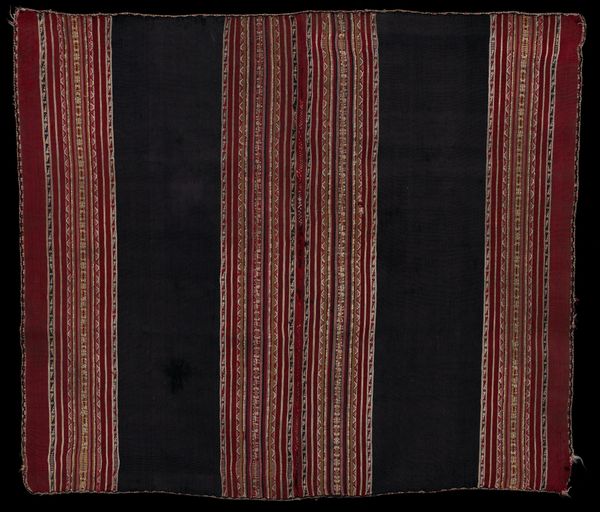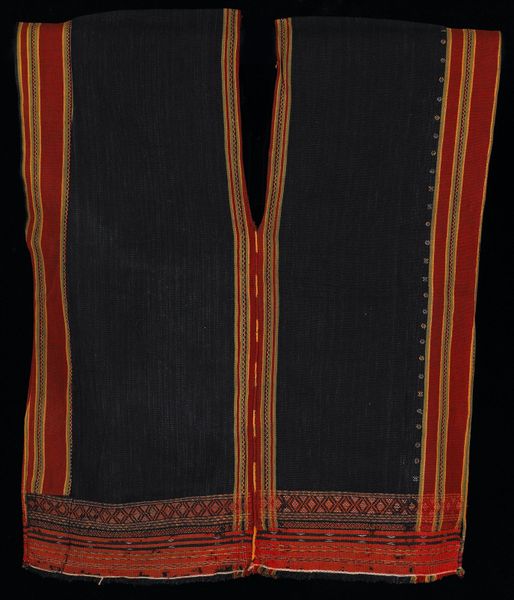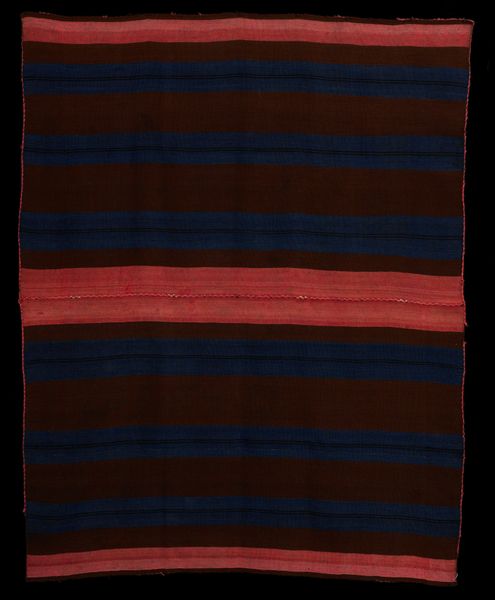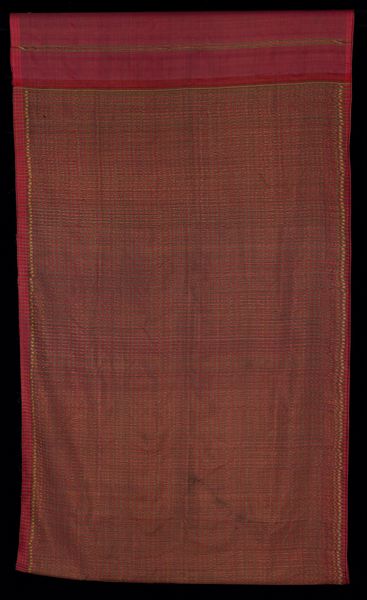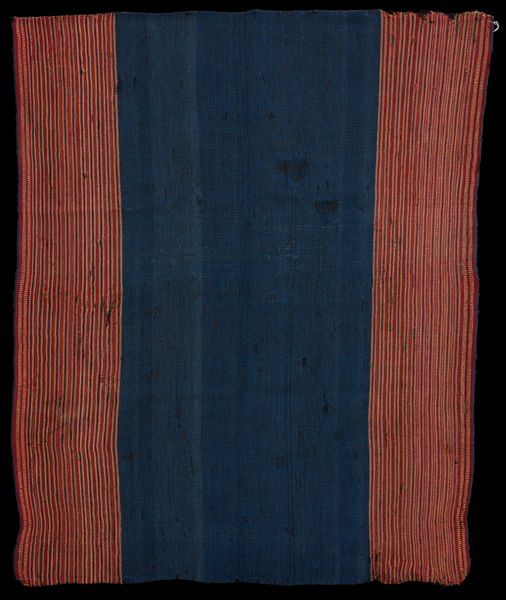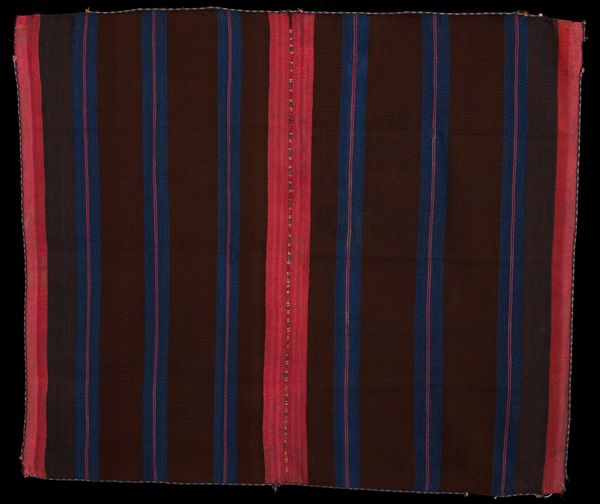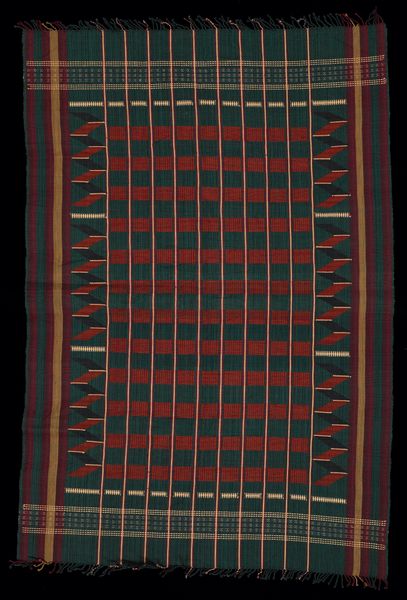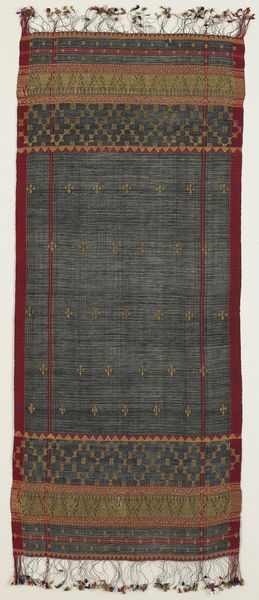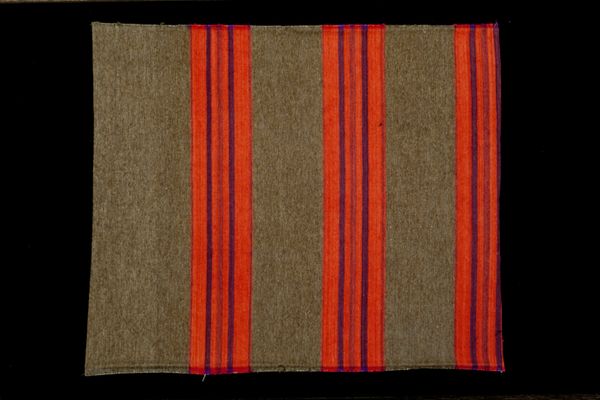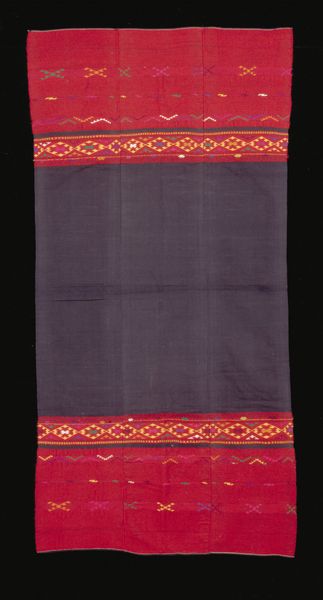
textile, cotton
#
geometric composition
#
textile
#
geometric pattern
#
cotton
Dimensions: 71 3/4 x 40 3/16 in. (182.25 x 102.08 cm)
Copyright: Public Domain
Curator: Here we have a 20th-century skirt from the Chakma people. The work employs cotton textile and is currently held in the Minneapolis Institute of Art. It strikes me as incredibly structured in its design. What's your take on it? Editor: Austere, almost mournful in its coloring. That deep indigo speaks volumes. Do you see any symbolic weight carried through that hue? Curator: Absolutely. The indigo is dominant, framed as it is by the black fields on either side, but observe the chromatic break. The twin crimson stripes, mediated by the finer gold lines that trace them, set up a fantastic, almost disruptive contrast to the blue and black. It redirects your perception from the darker elements. Editor: I see the red as potent, of course. It grabs your attention – perhaps signifying life force, energy, or even warning. In many cultures, it can represent courage, passion, or even sacrifice. Curator: Sacrifice, indeed, if we think of the immense labour involved in creating such work. I want to focus on the geometrical structure. The horizontal orientation of bands in primary and secondary colours builds towards a focalisation at the bottom. Do you read that as the base – literally the grounded part – that supports the rest of the cloth? Editor: Yes, I see the base design almost as an anchor. In terms of iconography, the Chakma people live in the Chittagong Hill Tracts, and their culture is heavily interwoven with their natural surroundings. Do the geometrical shapes allude to mountains or rivers, maybe, that define their ancestral land? Curator: The relationship between form and land, then? Very persuasive, yet if you step back from the symbolic level, notice how the work can simply act as an array of formalist principles. Contrast, symmetry, focalisation and chromatic break are here. I feel we shouldn't fall too heavily on interpretations without considering those intrinsic principles of design and intention first. Editor: Well, perhaps both are intrinsically interwoven; form informing meaning and vice versa. Ultimately it expresses a unified vision and reflects, consciously or unconsciously, deep ties to the culture it represents. Curator: True, but this formal organisation is beautifully restrained. The artist has managed a compelling balance of form and expression. Editor: Exactly. This piece quietly testifies to cultural perseverance.
Comments
No comments
Be the first to comment and join the conversation on the ultimate creative platform.
